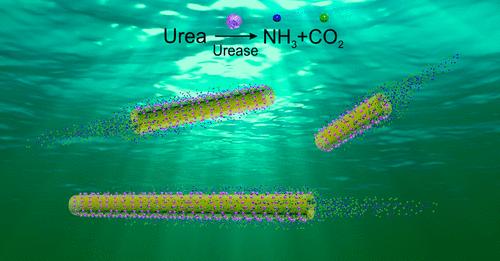

Urea reacts with the enzymes on the inside wall of the nanotube and this biocatalytic reaction propels the tube forward
MPI-IS
Dr. Samuel Sánchez is thrilled, just like last time he received a Guinness World Record for the smallest jet engine ever created. Sánchez is a Research Group Leader at the Max Planck Institute for Intelligent Systems in Stuttgart where he heads the smart nano-bio-devices group.
Together with scientist Xing Ma from China, the 37-year-old developed an engine 220 nm in diameter, roughly 200 times smaller than the diameter of a human hair. This engine is actually a nanotube, where not air, but liquid travels through.
The liquid is urea, one of the main components of urine. The urea reacts with the enzymes on the inside wall of the nanotube and this biocatalytic reaction propels the tube forward like a jet engine.
Nanotube travels through urea
Back in 2010, when the Guiness World Record Committee presented Sánchez with his first World Record Certificate, his nanotube was triple the size and it only worked in hydrogen peroxide, a toxic liquid used to bleach hair or disinfect surfaces.
Needless to say this nanotube wasn´t ever going to be applied in a human body. Now that the nanotube is able to move through urea – available in the human body – it is not harmful to it, Sánchez claims, and could be used for the treatment of patients.
“One day, this is what we hope, our nanotube will travel through a person´s body and apply drugs where they are most needed. It will carry cargo. Or act as a needle with its sharp front as it can penetrate a cancer cell and destroy it”, says Dr. Samuel Sánchez, who is also a ICREA Professor at the Institute for Bioengineering of Catalonia (IBEC) in Spain.
Dr. Samuel Sánchez received the Young Talent Award by Catalan Government in 2016. In 2015 he was awarded the Young Scientist Award by the King of Spain Foundation. In 2014 he received an TR35 award by the MIT as Spain´s Innovator of the Year. He also holds a Starting Grant and a Proof of Concept Grant by the European Research Council (ERC).
http://www.is.mpg.de/16375620/Jet-Engine-World-Record












